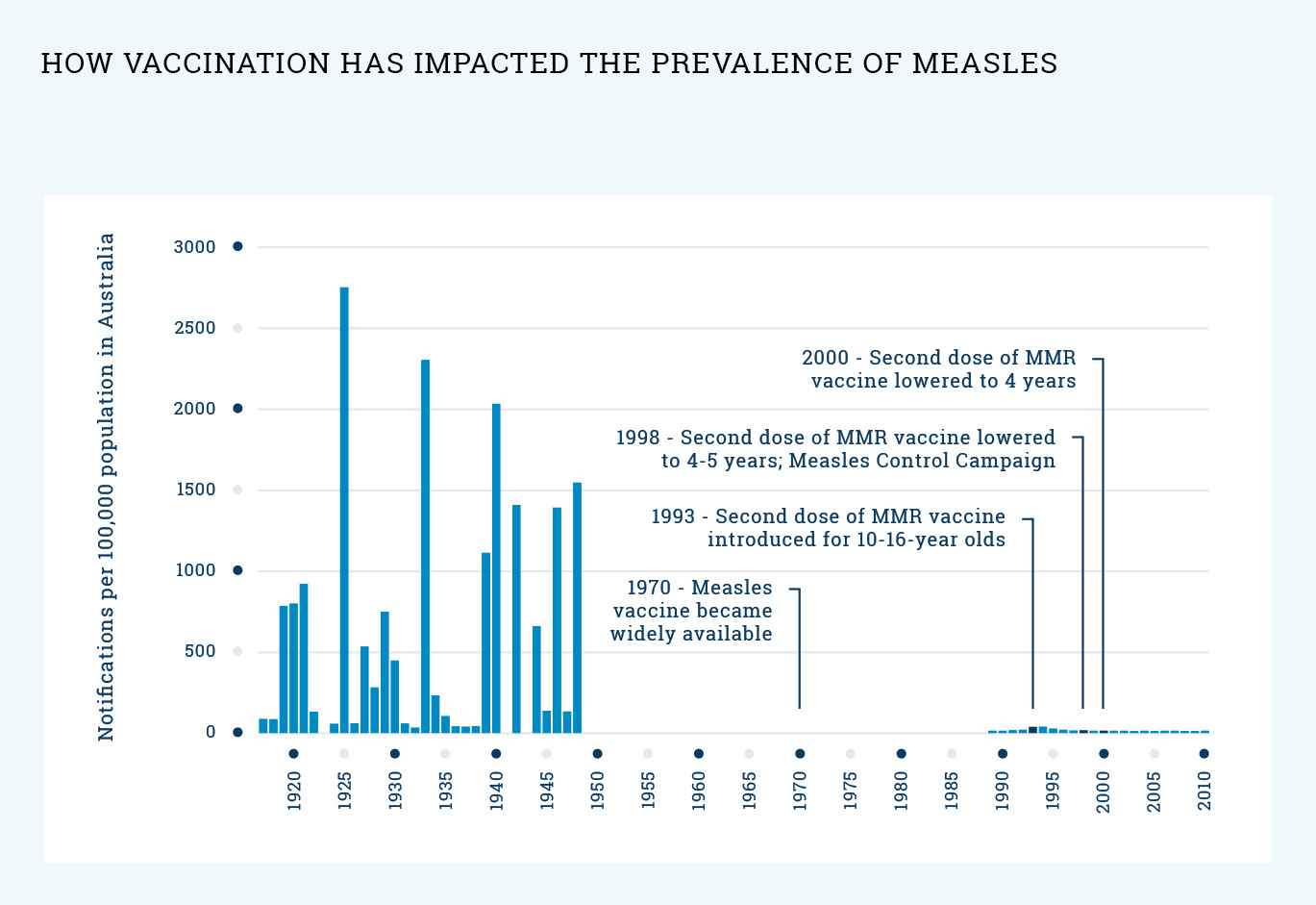Measles
Key facts
-
Measles is a virus that commonly causes a red and blotchy rash.
-
Measles can be very serious. It can cause lung infections (pneumonia), blindness, bleeding (thrombocytopenia) and brain diseases including meningitis and subacute sclerosing panencephalitis or SSPE.
-
The combination vaccines that protect against measles (MMR and MMRV) are the best way to protect your child from measles.
On this page
- What is measles?
- What will happen to my child if they catch measles?
- What vaccine will protect my child against measles?
- When should my child be vaccinated?
- How does the measles vaccine work?
- How effective is the vaccine?
- Will my child catch measles from the vaccine?
- What are the common reactions to the vaccine?
- Are there any rare and/or serious side effects to the vaccine?
- What impact has vaccination had on the prevalence of measles?
